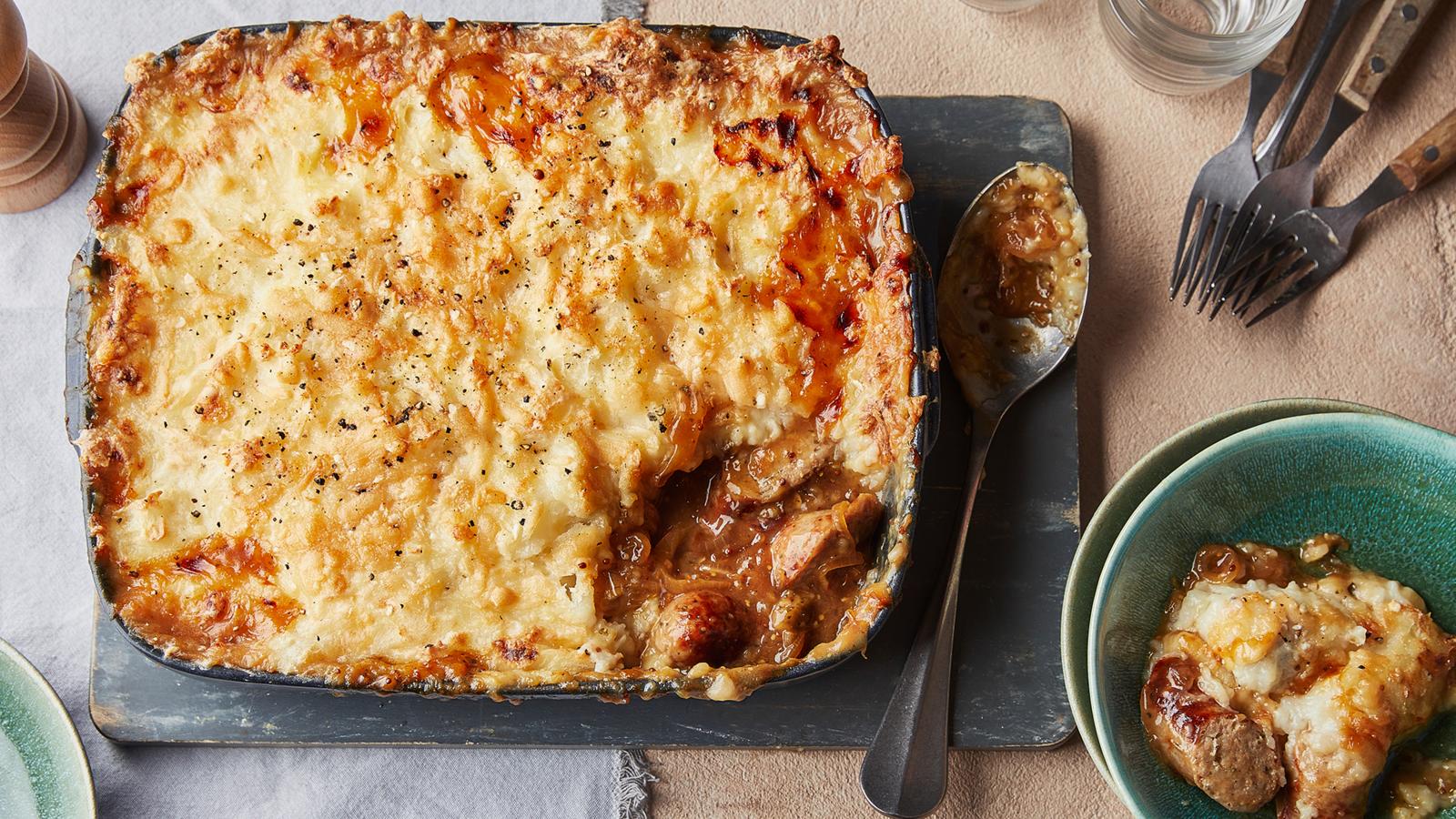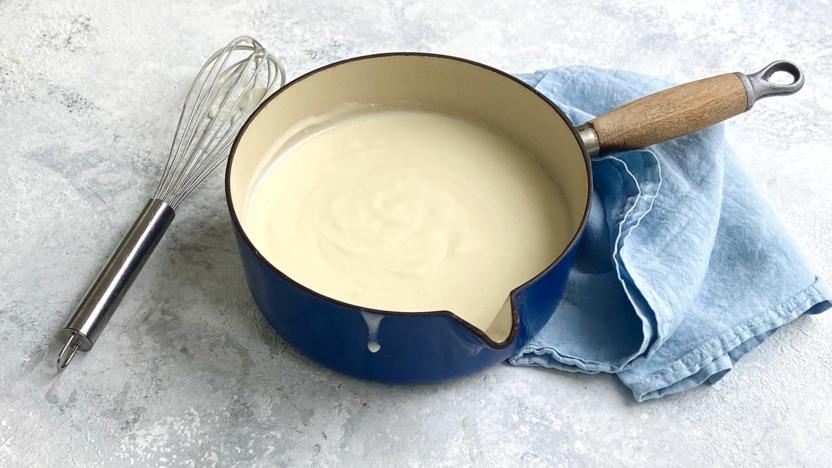Sausage & Mash Pie Recipe

A classic British combo in the form of a comforting pie, boasting chunky pieces of sausage covered with lashings of rich onion gravy.
Preparation time less than 30 mins, Cooking time 30 mins to 1 hour Serves 4–6
Ingredients:
For the mash
- 1kg/2lb 4oz Maris Piper potatoes, peeled and cut into large chunks
- 50ml/2fl oz goats milk
- 40g/1½oz salted butter
- 25g/1oz cheddar, grated
For the filling
- ½ tbsp oil, for frying
- 8 pork sausages (we used Cumberland)
- 1 tbsp salted butter
- 1 large onion, sliced
- 1 garlic clove, crushed
- 1 tbsp dried mixed herbs
- 2 tbsp apple chutney
- 1 tsp wholegrain mustard
- 2 tbsp plain flour
- 1 tbsp cider vinegar
- 500ml/18fl oz hot beef stock
- sea salt and cracked black pepper
Directions:
- Preheat the oven to 200C/180C Fan/Gas 6.
- Place the potatoes in a large saucepan of salted water. Bring to the boil, then turn down the heat to medium and allow to simmer for 10–15 minutes until the potato is soft when tested with a sharp knife.
- Drain the cooked potatoes into a colander, then return them to the warm pan along with the milk, butter and some salt and pepper. Mash the potatoes until smooth and fluffy. Set aside ready for assembly.
- Meanwhile, make the filling. Warm the oil in a pan over a medium heat then add the sausages. Fry for 8–10 minutes, browning the sausages on all sides. Remove the sausages from the pan and transfer to a plate.
- In the same pan, melt the butter then add the onion. Fry the onions for 4–5 minutes until they start to soften and brown. Add a pinch of salt and the garlic. Fry for a further 1–2 minutes.
- Sprinkle in the herbs and stir through the chutney and mustard. Sprinkle in the flour, stir to coat the onions, then add any juices from the sausage plate along with the cider vinegar and stock.
- Bring everything in the pan to the boil before reducing the heat to a rapid simmer. Cook for 5–8 minutes until the liquid is reduced and a thick, glossy gravy is created. Chop the cooked sausages into chunky pieces and add to the gravy. Taste and season as necessary with salt and pepper.
- Carefully pour the sausage mixture into an ovenproof dish before spooning over the prepared mashed potatoes. Sprinkle with the grated cheese and place in the oven for 25–30 minutes until the potato is golden and crispy.
- Remove from the oven and allow to rest for 5 minutes before serving alongside seasonal greens.


